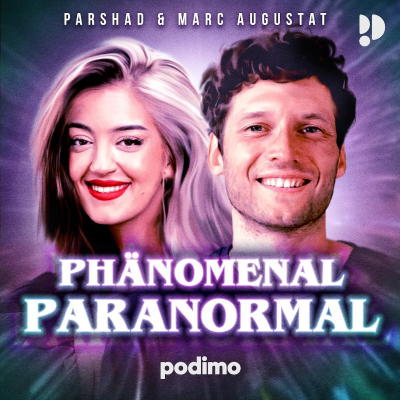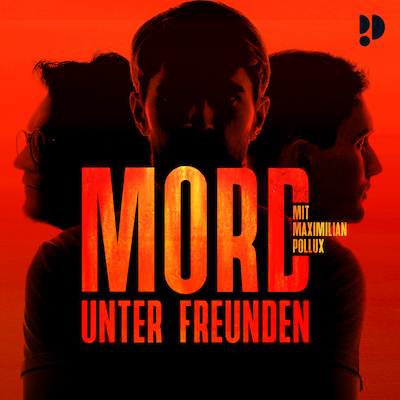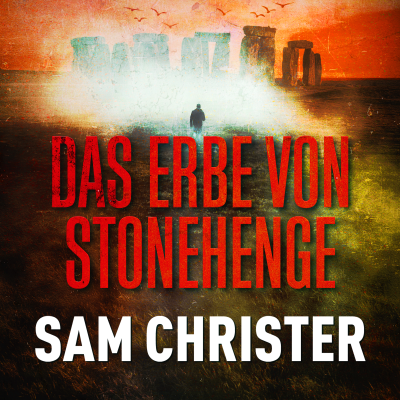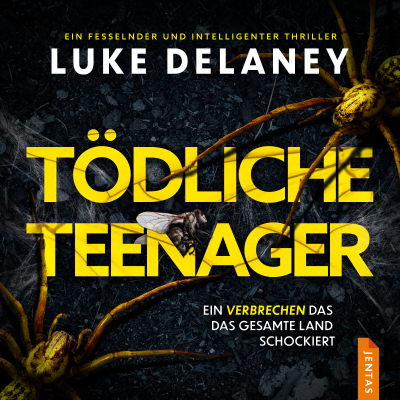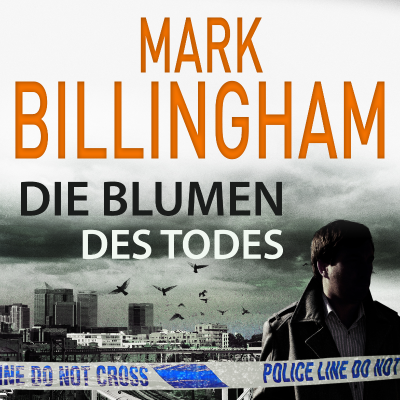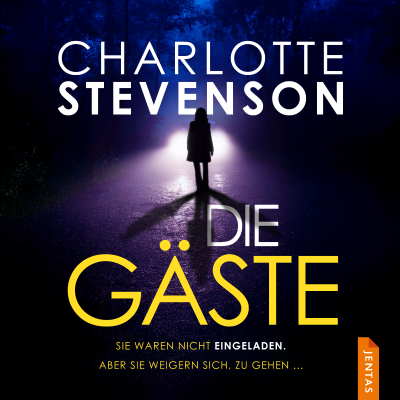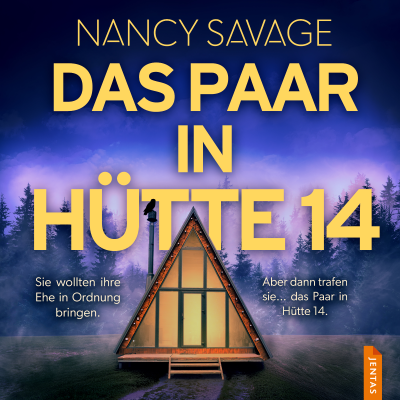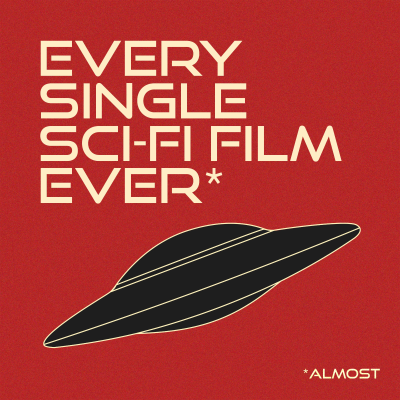
Every Single Sci-Fi Film Ever*
Englisch
Gratis en Podimo
Kostenlos hören bei Podimo
Starte jetzt und verbinde dich mit deinen Lieblingspodcaster*innen
- Vertraut von über 1 Mio. deutschen Hörer*innen
- Über 1.000 lokale Podcasts und Shows – nur bei Podimo
- Keine Zahlung nötig
Mehr Every Single Sci-Fi Film Ever*
The Every Single Sci-Fi Film Ever* podcast looks back at more than a century of films, beginning in 1902 and working towards the future. Each episode focuses on a film, director or theme and brings in experts to discuss the history, politics, and influences. Join sci-fi enthusiast Ayesha Khan as she travels through time and space, encounters aliens, and battles authoritarian regimes all from the comfort of your home planet. Released every two weeks*Almost Hosted on Acast. See acast.com/privacy for more information.
Alle Folgen
51 FolgenWhat is Afrofuturism?
Time for another detour! An introduction to Afrofuturism with two magnificent guests. You can follow the podcast on social media on Threads, Instagram and Bluesky. If you would like to be a patron of the podcast it would be greatly appreciated! You can join Patreon and for £3 or $3 a month you can get ad free version of the show. https://www.patreon.com/everyscififilm [https://www.patreon.com/everyscififilm] The symbol mentioned in the podcast a few times is the Sankofa symbol which is a recurring symbol in Afrofuturism. It represents the idea that there are things that you go back for (and things you leave behind). You can read more about it on this wiki page: https://en.wikipedia.org/wiki/Sankofa [https://en.wikipedia.org/wiki/Sankofa] Julian Chambliss is a scholar and a professor at Michigan State University. He is the author of multiple books including Mapping Afrofuturism: Understanding Black Speculative Practice Ytasha Womack [https://www.ytashawomack.com/] is a filmmaker, cultural critic and author of the books Afrofuturism: The World of Black Sci-Fi and Fantasy Culture and The Afro Futurist Evolution: Creative Paths of Self Discovery. Chapters 00:00 Introduction 01:18 Afrofuturism origin story 08:04 Afrofuturism and science fiction 11:44 Retro Afrofuturism: Of One Blood by Pauline Hopkinson 16:37 The diaspora and Afrofuturism 19:53 Dance and the individual as a nexus of time and space 23:24 Ancestry in Afrofuturism 25:32 Moving away from dystopia: Slavery as apocalypse 29:55 Optimism for the future 33:03 Holistic utopias and protopia. 35:43 Mystical frameworks 38:15 Alternative realities and the multiverse 41:38 Theory, practice and interconnectedness 46:21 Recommendations Recommendations: The Afro Futurist Evolution: Creative Paths of Self Discovery by Ytasha Womack (I would also thoroughly recommend her book Afrofuturism: The World of Black Sci-Fi and Fantasy Culture.) Agharta by Miles Davis Blake; or The Huts of America: A Tale of the Mississippi Valley, the Southern United States, and Cuba by Martin Delany Space is the Place by Sun Ra Lee "Scratch" Perry George Clinton Mothership Connection by Parliament Pedro Bell and Overton Loyd Beyond the Black Panther [https://museum.msu.edu/exhibition/beyond-the-black-panther-visions-of-afrofuturism-in-american-comics/] exhibition at MSU Rise [https://www.wkar.org/podcast/rise] podcast by Julian Infinitum by Tim Fielder NEXT EPISODE! Next time we'll be talking about Dr Strangelove or: How I learned to Stop Worrying and love the Bomb (1964)! You can watch the film pretty much anywhere and it is readily available to buy or rent online from many platforms. I would also recommend watching Fail Safe from the same year because it is excellent, affected the production of Dr Strangelove and due to their similarities.
Ikarie XB-1: 1963 Communist Utopia in Space
As always there are spoilers ahead! We've discussed Czech scifi before with Karel Zeman's gorgeous steam punk offering from 1958 Invention for Destruction (dubbed into the English language The Fabulous World of Jules Verne) and we've also covered Communists in Space with 1960s The Silent Star (AKA First Spaceship on Venus). The Czech Ikarie XB-1 (1963) has connections to both of those films but also offers an aesthetic that seems to directly inspire Kubrick for 2001: A Space Odyssey [https://www.instagram.com/p/DRb2S_WiCxt/?hl=en]. The year is 2163, communism has won, and a crew of 40 are sent to find life on the white planet in Alpha Centauri with a journey fraught with sociological, psychological and physical challenges. I have two amazing academics to help give insight into the film. Evan Torner is an Associate Professor of German Studies and Niehoff Professor of Film & Media Studies at the University of Cincinnati. Simon Spiegel is a lecturer of Film Studies at the University of Zurich. He has written extensively about Science Fiction and Utopia and has just released the book The Fear of Knowing about spoilers in film and media. Chapters: 00:00 Introduction 01:11 Stanislaw Lem's The Magellanic Cloud 04:28 Czechoslovakian New Wave and film industry 09:49 The striking introductory scenes and Kubrick's 2001 13:05 Cabin fever in spaaace! 15:13 Music by Zdeněk Liška 16:57 Communist utopia in spaaace! 20:57 The draw of sociological stories 26:19 A utopian party and a red alert 28:15 The capitalist ship and the 20th century 32:47 Putting science into sci-fi 39:30 Evan's Dark Matter Shenanigans 42:21 Post Stalin faith 43:41 The ending 45:39 The US edit 47:27 Legacy 52:18 Recommendations NEXT EPISODE! I will be taking a detour next episode to talk about Afrofuturism which I've been wanting to discuss since the very early days of research before I launched the podcast. Almost two years late but I hope you enjoy it. After that we will be discussing Dr Strangelove and I would recommend you also watch Fail Safe (also 1964) if you have time.
X-Ray Eyes: Roger Corman's 1963 Psychedelic Sci-Fi
As always there are spoilers ahead! You can follow the podcast on social media on Threads [https://www.threads.net/@everyscififilm], Instagram [https://www.instagram.com/everyscififilm] and Bluesky [https://bsky.app/profile/everyscififilm.bsky.social]. If you would like to be a patron of the podcast you can join Patreon and for £3 or $3 a month you can get ad free version of the show. https://www.patreon.com/everyscififilm [https://www.patreon.com/everyscififilm] Roger Corman produced hundreds of films in his lifetime and directed dozens. X: The Man with the X-Ray Eyes is a colourful, psychedelic, 1960s extravaganza with aspirations of transcendence. If you wanted to join in, you can watch the film X: The Man with the X-Ray Eyes from 1963 first. DVDs of the film are available, but it is also available to rent and watch online on Apple TV and many other platforms. You can check the Just Watch website to see where it is available in your region. Oscar winner Ray Milland (we heard a bit about him in the Panic in Year Zero! episode) stars as a mad scientist who creates a serum that will help him understand the secret of life itself. A serum that unlocks the 90% of the visible spectrum that is beyond our realm of vision. The film is fun and pacey and the tone is once again firmly in the 1960s. I have two excellent guests to help us unravel the minds and life's mysteries around what could be Corman's magnus opus. Barry Keith Grant is professor Emeritus of Film Studies at Brock University Canada. He has written/edited numerous books, articles and essays about science fiction cinema. John Wills is a Professor of American Media and Culture at the University of Kent. He has written lots about popular culture including 1950s American and Nuclear film. Chapters: 00:00 Intro 01:57 Barry's experience of watching the film on release 03:48 Eyeballs and vision 08:58 The body in sci-fi 10:57 Mad science and closing in on the Gods 12:20 Science in the 60s 15:56 LSD 17:18 A film of two halves 19:18 Diane's romantic arc 21:57 Hays Code & the Nudie Cuties 25:35 Roger Corman's 2001: A Space Odyssey comparison 31:17 Special Effects 32:41 Gurus incoming 34:48 Blunt honesty of Xavier 37:36 The music of Les Baxter 39:59 Stephen King and the ending 44:23 Legacy 51:21 Recommendations CORRECTION: We refer to the female scientist as Diana but her name is Diane. NEXT EPISODE! Next episode we are heading back to the Eastern Bloc with the Czech 1963 scifi Ikarie XB-1. In terms of watching it, the American version is titled Voyage to the End of the Universe and is a different edit. Although Just Watch advertises the English language title it seems to not differentiate which edit is available. The original is available on The Criterion channel and also cultpix.com.
The Manchurian Candidate 1962: Politics, Power & Paranoia
As always there are spoilers ahead! You can follow the podcast on social media on Threads [https://www.threads.net/@everyscififilm], Instagram [https://www.instagram.com/everyscififilm] and Bluesky [https://bsky.app/profile/everyscififilm.bsky.social]. If you would like to be a patron of the podcast you can join Patreon and for £3 or $3 a month you can get ad free version of the show. https://www.patreon.com/everyscififilm [https://www.patreon.com/everyscififilm] In 1959 at the cusp of a new and exciting decade Richard Condon wrote a book that is largely described as a political thriller. And it is a political thriller. But it also fits neatly into my concept of science fiction. To learn more about what is and isn't science fiction you can head to the heady days of the first episode where the topic is discussed with science fiction scholars Lisa Yaszek and Glyn Morgan. (Please do excuse the fear in my eyes.) Just a few years later a film was made by John Frankenheimer, starring Frank Sinatra, Janet Leigh and a brilliant and manipulative Angela Lansbury. The 1960s USA is in peak cold war fears, and the CIA is undertaking covert operations of their own, with the MKUltra programme, testing on humans to discover whether they can be manipulated and brainwashed. Although this film continues many themes from the 1950s it is definitely a product of the new age as culture shifts and a new batch of Hollywood directors take cinema in a different direction. I am lucky to have two brilliant guests to talk us through the themes and context of this film. Ian Scott is a Professor of American Film and History at The University of Manchester. He has written extensively about politics and film in Hollywood including the book American Politics in Hollywood Film. Sherryl Vint is Professor of Science Fiction Media Studies at the University of California, Riverside. She has written/edited many books about science fiction. Chapters 00:00 Introduction 02:23 New Hollywood Directors 04:57 Richard Condon's novel 07:00 Mind control in science fiction 09:40 Cold War in the Far East 16:57 The brilliant brainwashing scene 25:28 Raymond Shaw the unlikely hero 29:17 Frank Sinatra as Marco 33:17 Angela Lansbury as Eleanor 37:54 Janet Leigh 44:04Eisenhower and the legacy of conspiracy films 48:31 The remake 52:29 Recommendations The recommendations this week are the films Suddenly (1954) and Seconds (1966). I will be covering Seconds in the near future so you can get ahead by watching it if you like! NEXT EPISODE! Next episode we will be discussing the Roger Corman film X: The Man with the X-Ray Eyes from 1963 starring Ray Milland. DVDs of the film are available but it is also available to rent and watch online on Apple TV and many other platforms. You can check the Just Watch website to see where it is available in your region.
The Day of the Triffids: Wyndham vs Sci-Fi Spectacle
There are spoilers ahead for all versions of The Day of the Triffids and also for the film Signs. You can follow the podcast on social media on Threads [https://www.threads.net/@everyscififilm], Instagram [https://www.instagram.com/everyscififilm] and Bluesky [https://bsky.app/profile/everyscififilm.bsky.social]. If you would like to be a patron of the podcast you can join Patreon and for £3 or $3 a month you can get ad free version of the show. https://www.patreon.com/everyscififilm [https://www.patreon.com/everyscififilm] This episode had been edited down to a more digestible length of under an hour but a longer (audio only) version is available for Patreon subscribers (alongside the shorter option). We are doing things a little differently and discussing the 1963 film along with the source material which is John Wyndham's 1951 book The Day of the Triffids. The Day of the Triffids film was released in 1963 after reshoots were required to add a whole new arc in the story and bring the time to a more suitable length for a feature. The film has many of the hallmarks of a 1950s science fiction film but seems to be reflective of the Golden Era of science fiction very much coming to its end. The film is (very loosely) based on John Wyndham's first successful novel but seems more dedicated to the tropes of a 1950s sci-fi marketed for a mass, US leaning audience. The book is chockful of themes that are touched upon throughout the story which have very little (if any) presence in the film. I have added a list of the characters we discuss below as well as a quick overview of their roles in the book and the film. As usual I have two insightful guests to help us understand all of this. Matthew Rule-Jones is a senior lecturer in film studies at the University of Exeter and author of the book Science Fiction Cinema and 1950s Britain: Recontextualising Cultural Anxiety. Adam Stock is a senior lecturer in English Literature at York St John University and author of the book Dystopian Fiction and Political Thought: Narratives of World Politics. Chapters: 00:00 Intro 01:30 John Wyndham's first hit 05:23 The concept of the cosy catastrophe 08:43 Wyndham's Britain: post-colonial triffids coming home to roost 14:48 The 1963 film: Wells, end of the golden age and marketing 20:04 The lighthouse sequences: Karen vs Josella 23:06 Weed killers in The Silent Spring era and WW2 imagery 25:17 The role of the Triffids 30:37 Bill Masen the hero 34:37 Coker's missing role 37:11 Women! 40:27 The ending 46:51 Legacy 53:57 Recommendations Bill Masen: Hero in both the book and the film. In the book Bill is English and works for the triffid farm where he has been almost blinded by a triffid sting. His colleague begins to suspect the triffids are indeed sentient and able to communicate. This brings up questions around exploitation and enslavement. In the film Bill is American and works for the US Navy who help save the hero and other survivors at the end of the film. Josella Playton: The heroine from the novel is not present in the 1963 film. Josella comes from a wealthy family (one with servants) and has written a notorious book titled Sex is my Adventure. Coker: Coker has a large role in the book and we meet him as an advocate for the newly blinded masses when many of the few sighted people left are attempting to save themselves from the threat of a disintegrating society. He is a strong public speaker from a working-class background who had learned to speak in a way that is more amenable to the intelligentsia and upper classes. His strongly held beliefs (of forcing the sighted to serve the blind) change through the book to become less idealistic and more practical. Coker in the film is an old man with a very minimal role who dies early in the story form a triffid attack. Susan: Is a young girl who is rescued by Bill in the film after a train crash and ensuing chaos. In the book Bill takes in Susan whose family have died. She is a capable young child who develops an understanding of triffid behaviour from observing them as she guards the home that Josella and Bill stay in for many years. Miss Durrant: In the film Miss Durrant is the beautiful heroine that Bill meets in a large house in France that is caring from blind survivors of the meteor shower. In the book, Miss Durrant is a religious minded woman who is appalled at a man named Beadley's attempts to rebuild society through polygamy. She seems to purposefully mislead Bill who is trying to track down Beadley because he thinks Josella will be with him. NEXT EPISODE! Next episode we will be speaking about The Manchurian Candidate from 1962 by John Frankenheimer. A film that may not fit the definition of science fiction for many people but by now I think we know how ambiguous those definitions can be! You can find the film on streaming platforms including Apple TV. The Just Watch website is a good resource to find where the film is available online in your region.




